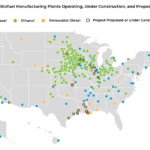Imagine a home chef doing a dance of joy after realizing that their new stainless steel cookware is exactly what they were looking for: a durable frying pan that distributes heat evenly.
This response is made possible through rigorous testing to ensure the durability and performance of our cookware, statistical process controls to maintain consistent manufacturing standards, and thorough inspections to ensure flawless workmanship – all of these procedures are components of a quality assurance process whose ultimate goal is to deliver products that meet our customers’ expectations.
Read on to learn more about the types of quality assurance methods and how to establish and maintain a robust QA program.
What is the quality assurance?
Quality Assurance (QA) ensures that a company’s products and services meet their company’s or industry’s quality standards. This multi-step process enables quality assurance specialists to identify and prevent potential problems during the development, manufacturing and delivery stages to ensure the final product meets established standards.
For example, a cosmetics company that produces face cream will employ QA measures to ensure that the manufacturing process produces a cream with the expected formula.
Investing in QA allows you to proactively address quality concerns, minimize errors, and reduce the costs associated with rework and customer complaints. Customer Satisfaction,Strengthen Brand loyalty.
Quality Assurance and Quality Control
Although quality assurance and quality control (QC) both deal with delivering a quality product, they are different processes. Quality assurance is a proactive process to prevent defects and ensure that a company is meeting quality standards throughout the entire manufacturing process.
Quality control, on the other hand, is a reactive process that identifies and corrects defects and inconsistencies before the final product or service reaches the customer. QA aims to prevent quality problems from occurring, while QC aims to detect and correct problems that have already occurred.
Quality Assurance Method
Companies can employ quality assurance methods to ensure that their products and services meet the desired quality standards. The method chosen will depend on the nature of the product or service, industry regulations, and the company’s specific quality objectives.
Failure Testing
Failure testing involves intentionally subjecting a product to extreme conditions and stresses to identify potential weak spots or points of failure. This method helps determine the limits of a product’s performance and durability so that necessary improvements can be made.
For example, retailers may conduct failure testing by exposing shoes to different weather conditions, impact tests, and stress tests to ensure the shoes can withstand normal wear and tear.
Statistical Process Control
Statistical Process Control (SPC) uses data to monitor and control the quality of a product or service during the production process. By collecting and analyzing data at various stages, deviations from desired quality standards can be identified and corrective action can be taken.
A clothing retailer might use SPC to monitor the consistency of garment sizes, fabric quality, and stitching precision throughout the production process.
Total Quality Management
Total quality management (TQM) is a more comprehensive approach that integrates quality assurance principles into all aspects of a business. Product Design To customer serviceTQM emphasizes continuous improvement, employee engagement, and customer satisfaction. Implementing TQM helps to foster a culture of quality throughout the organization.
Go Go Sweater is a handmade luxury knitwear brand based in Calgary, Canada, producing irresistible sweaters sold at retailers such as Free People, Revolve, and Holt Renfrew. To maintain their standards, the team has worked with a single partner supplier for 10 years, sourcing the highest quality wool from Italy.
Working with a large team of local knitters, the company has developed guidelines to ensure consistent quality control, such as avoiding “overworking” the knits, and has integrated technology into the production process to improve the quality of its sweaters.
“We now produce through an app; knitters receive their orders on their phones,” says president and designer South Van Deer Lee. To tell Shopify Master Podcasts“I encourage the knitters to do their best because this is their job. This is a product they made themselves. It’s not made by a machine.”
Process and product quality assurance
Process and Product Quality Assurance (PPQA) ensures the quality of manufacturing processes and final products. This approach involves establishing quality standards, monitoring compliance, and identifying opportunities for improvement. Implementing PPQA can help prevent defects, reduce waste, and improve efficiency.
For example, a furniture retailer can use PPQA to ensure that manufacturing processes comply with industry standards such as ISO 9001, that raw materials such as wood and fabrics meet specific quality grades, and that finished products undergo rigorous inspection for workmanship and structural integrity before being shipped to customers.
Quality Assurance Process
Quality assurance processes typically follow the Plan-Do-Check-Act (PDCA) model, also known as the Deming Cycle, named after economist W. Edwards Deming. This iterative, four-step approach enables companies to continuously improve their products or services by identifying areas for improvement, implementing changes, and monitoring the results. The steps are:
plan
We start by establishing quality objectives, defining processes, and determining the resources needed to deliver a quality product or service. From there, we set clear, measurable goals and create a detailed action plan to achieve them.
do
This is where you execute the plan, implement the process, and produce the product. It is important to document every step and collect relevant data for analysis.
check
At this point, you monitor and evaluate the results against the quality objectives you defined in the first step. Look for deviations and non-conformances and identify the root causes of quality issues.
Activities
Based on the findings, corrective actions are taken to address identified quality issues and make necessary improvements, including standardizing successful changes and communicating improvements to internal stakeholders.
Tips for successful quality assurance
A successful quality assurance program requires careful planning, execution, and continuous improvement. Following these best practices will help you establish a robust quality assurance system and ensure you deliver consistently high-quality products to your customers.
Establish clear quality goals and standards
Define measurable, achievable and relevant quality objectives that align with customer expectations and industry benchmarks. These objectives can include product performance, customer satisfaction, defect reduction and compliance with specific regulations and standards.
Quality objectives vary depending on your industry and customer needs: for example, an e-commerce business selling handcrafted jewelry might focus on consistent craftsmanship, timely order fulfillment, and responsive customer service, while a medical device manufacturer prioritizes compliance with strict regulations like FDA standards, product reliability, and safety.
Document quality control measures
Developing a comprehensive quality system that outlines processes, procedures, and quality control measures will help your team achieve its goals. Create detailed documentation, such as quality manuals, work instructions, and inspection checklists, to ensure that everyone in your organization understands and consistently follows the established quality standards.
Selecting the right quality assurance method
Evaluate different quality assurance methods and determine which approaches are most effective for your products, services, and Business ObjectivesFor example, a company that makes outdoor furniture may choose to focus on failure testing to ensure their products can withstand a variety of weather conditions and maintain their structural integrity, while a manufacturer of baby formula may choose statistical process control to ensure consistent product quality and compliance with strict industry regulations.
When choosing your quality assurance focus, consider factors such as the complexity of the development process, available resources, and the potential impact on customer satisfaction.
Foster a culture of continuous improvement
We encourage a continuous improvement mindset throughout our organization, from product design and development to customer service and support. Through training and resources, employees understand their role in maintaining quality standards and can identify opportunities for improvement. Feedback Loop It enables you to identify, analyze, and resolve quality issues in a timely manner.
Quality Assurance FAQ
What is the difference between QA and QC?
Quality assurance (QA) focuses on preventing defects throughout the manufacturing process, while quality control (QC) focuses on identifying and correcting defects in the final product.
What is the difference between Software Quality Assurance and Product Quality Assurance?
Software Quality Assurance ensures that software products meet specified requirements and are fit for use, while Product Quality Assurance covers a wider range of products, including physical goods, to ensure that they meet the required quality standards.
What is the role of QA?
The role of quality assurance is to establish and maintain processes that ensure that products or services consistently meet or exceed customer expectations and comply with industry standards.
What are the four points of quality assurance?
The four key aspects of quality assurance are plan (establish quality objectives and processes), execute (implement the plan and produce the product), verify (monitor and evaluate results against quality objectives), and act (take corrective actions based on findings and implement improvements).








